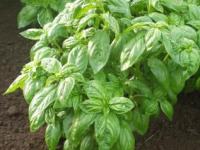Myrrh Resin
For four thousand years, Myrrh has been known as a powerful natural antiseptic, antibacterial, antiviral, anti-inflammatory and antifungal that combats infections of the lungs, skin and urinary and intestinal tracts. Since antiquity, Myrrh has been used to relieve pain and alleviate sinusitis, gingivitis, periodontal disease and sore throat, and has long been used to help bolster the body's natural immune defenses. Myrrh is also a natural deodorizer and can help to sweeten the breath
Myrrh is a reddish-brown resinous material, the dried sap of a number of trees, but primarily from Commiphora myrrha, which is native to Yemen, Somalia, the eastern parts of Ethiopia, and Commiphora gileadensis, which is native to Jordan. The sap of a number of other Commiphora and Balsamodendronspecies is also known as myrrh, including that from Commiphora erythraea (sometimes called East Indian myrrh), Commiphora opobalsamum andBalsamodendron kua. Its name entered English via the Ancient Greek, µ???a, which is probably of Somali or Arabic origin, where it is known as (??: Murr). The name "myrrh" is also applied to the potherb Myrrhis odorata otherwise known as "Cicely" or "Sweet Cicely". High quality myrrh can be identified through the darkness and clarity of the resin. However, the best method of judging the resin's quality is by feeling the stickiness of freshly broken fragments directly to determine the fragrant-oil content of the myrrh resin. The scent of raw myrrh resin and its essential oil is sharp, pleasant, somewhat bitter and can be roughly described as being "stereotypically resinous". When burned, it produces a smoke that is heavy, bitter and somewhat phenolic in scent, which may be tinged with a slight vanillic sweetness. Unlike most other resins, myrrh expands and "blooms" when burned instead of melting or liquefying. The scent can also be used in mixtures of incense, to provide an earthy element to the overall smell, and as an additive to wine, a practice alluded to by ancient authorities such as Fabius Dorsennus. It is also used in various perfumes, toothpastes, lotions, and other modern toiletries.
Uses
Myrrh was used as an embalming ointment and was used, up until about the 15th century, as a penitential incense in funerals and cremations. The "holy oil" traditionally used by the Eastern Orthodox Church for performing the sacraments of chrismation and unction is traditionally scented with myrrh, and receiving either of these sacraments is commonly referred to as "receiving the Myrrh".*Information in listing is stated for educational purposes only.
- Brand WSF
00642
Payment Methods


Shipping
$1.99
Shipping Policy
Item is shipped out within 3 business days.
Return/Exchange Policy
Exchanges are accepted but not returns.
Please Login or Register first before asking a question.


































